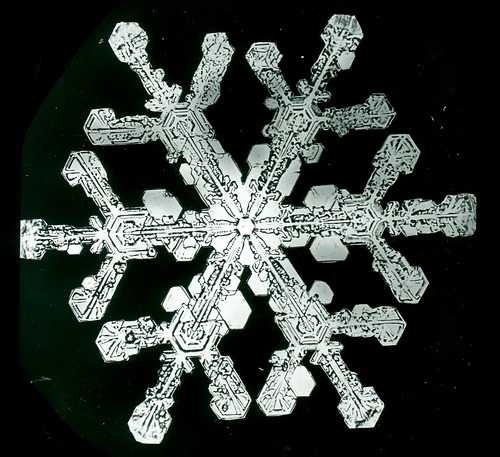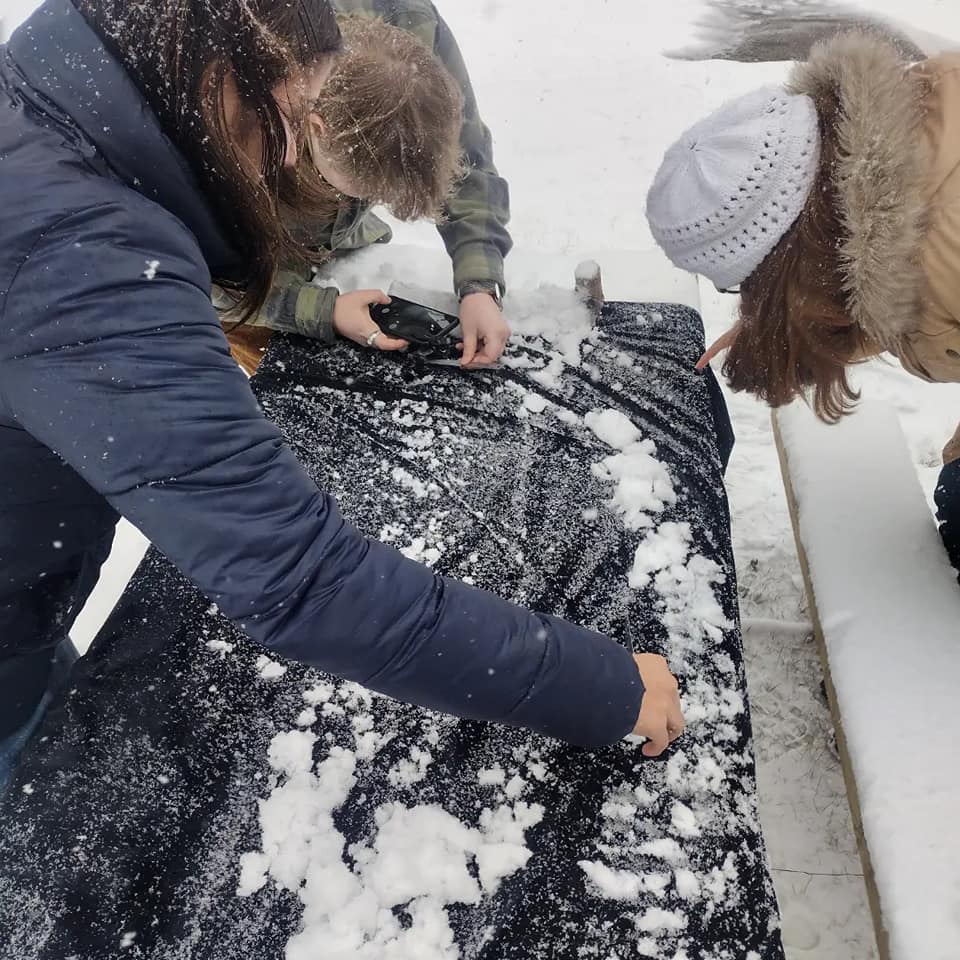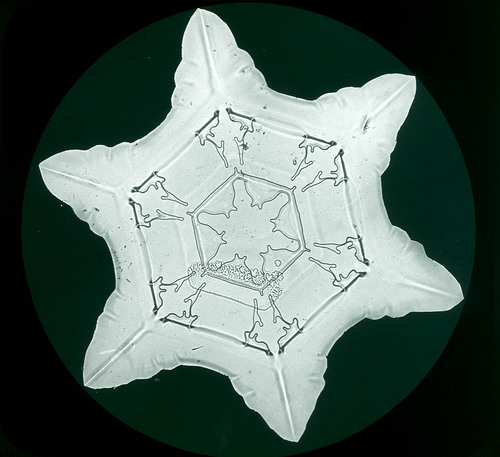We’ve all heard that no two snowflakes are alike. But few people know that most are similar enough they can be classified.
Michael Notaro with the University of Wisconsin-Madison is teaching Wisconsin school children the similarities in snowflakes to share the wonder of nature and information about the Great Lakes climate, but also to expand an international environmental database.

An “ordinary dendritic” snowflake crystal. This means it has six branches. Image credit: The Bentley Collection, UW- Madison.
The database is called GLOBE, which stands for Global Learning and Observations to Benefit the Environment. This environmental education youth citizen science program began in 1995 and is run by NASA (National Aeronautics and Space Administration). It is sponsored by the National Oceanic and Atmospheric Administration (NOAA), the National Science Foundation and the U.S. Department of State. According to Notaro, more than 40,000 schools in 127 countries participate by inputting data such as temperature, wind speed, soil moisture and bird migration from their communities into the online GLOBE database.
Notaro, director for the Nelson Institute Center for Climatic Research, said his Sea Grant-funded Snow-GLOBE Youth Citizen Science Collaborative project helps address a lack of climate science education in the classroom.
“There’s very little time allocated toward the topics of weather and climate, particularly climate change,” he said. “Also, a lot of educators have expressed discomfort in terms of their training and teaching related to climate. So, I’m trying to provide the tools for the teachers, the training for the teachers, and also the opportunities for the students to learn how to become citizen scientists – that they themselves, even as a young person, can support some of the missions of NASA, NOAA and other agencies.”

Darien Becker, environmental educator with Welty Environmental Center (right), instructs two interns from Beloit Memorial High School on how to identify snowflakes using the Snow-GLOBE protocol. Image credit: Aaron Wilson, Welty Environmental Center.
He’s currently working with eight schools and three environmental centers across Wisconsin in Beloit, Racine and Door County. The children measure snow depth, snowfall amounts and their liquid equivalents. This data has a home in GLOBE already. What doesn’t have a home is snowflake classification. Notaro would like to change that.
The children take photos of snowflakes with their cellphones and a special lens, which Notaro provides. “They start with a wooden board with black velvet. The flake falls on it. Then you use a clip-on macro lens to take a photo and a high-precision ruler to estimate the crystal’s diameter. I also provided information like images from the Bentley Library,” Notaro said.
The Bentley Collection is housed at UW-Madison’s Space Science and Engineering Center. It contains photomicrographs (photos taken through a microscope) by Wilson Bentley, a homeschooled Vermont farm boy who developed a passion for studying water in all its forms. Snowflakes were his specialty, and he sold collections to universities across the United States, including UW-Madison.
Based on the shape of the crystal, the students can classify what type of snowflake it is. Some of the options include columns, hexagons, two branches, four branches, and the typical Christmas-card version with six branches.
Notaro said the photography activity is a hit. “Kids are interested in their cell phones, as we know. Kids are interested in photography. This connects those interests to science.”

A plate snowflake with simple extensions. Image credit: The Bentley Collection, UW-Madison.
Such data will help track what’s going on with snow in Wisconsin. Notaro’s goal is to expand the project to more middle schools, high schools and environmental centers in Wisconsin and across the Great Lakes.
“Ideally, I hope to find a school where there are three or more teachers interested in participating,” he said. “That helps with the longevity of their involvement. And then I usually set up a professional development workshop near them. I’ll order GLOBE equipment, so I supply all the equipment that they need. Then I provide training and calibration instructions and work with the school.”
Interested educators can contact Notaro at mnotaro@wisc.edu.
“This upcoming winter we’ll be able to get some data collected. The goal is building up the schools and the resources toward data collection. I hate to say it, but hopefully, it snows a lot,” Notaro said.





